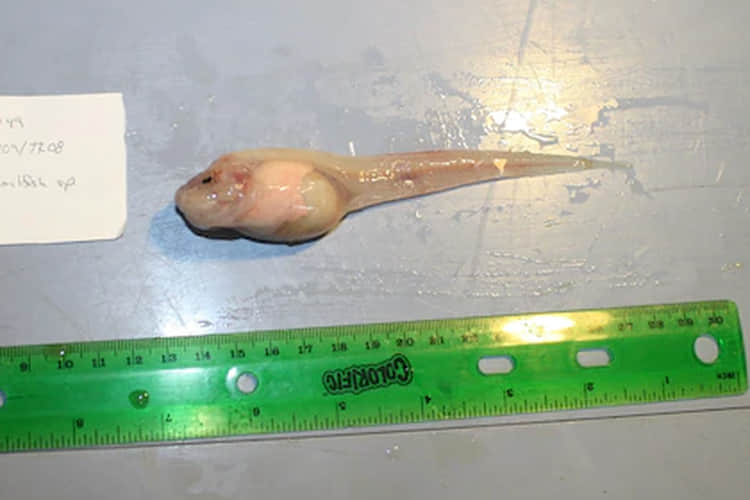It’s Blue Monday today, supposedly the most depressing day of the year, although with the start 2021’s got off to, and the precedent set by last year, we may have peaked too soon. So to cheer you up here’s a pair of blue-footed boobies.

Blue-footed boobies are one of the most comical species of birds in the world. With their funny faces, fabulous feet, and clumsy, yet endearing mating dance, they’re sure to put a smile on your face.
Blue-footed boobies are one of three species of boobies that inhabit the Galapagos Islands, the other two being the red-footed booby, one of which, it may surprise you to learn, made a flying visit to Essex in 2016, and the Nazca booby. About half of all blue-footed boobies live on the Galapagos; the rest can be found along the coasts of the eastern Pacific Ocean from California to Peru. They belong to the bird family Sulidae, large seabirds that dive for fish and nest in colonies, of which the gannet is also a member, and are most closely related to the Peruvian booby.

Blue-footed boobies are about 80 cm tall and weigh 1.5 kg, around the size of a large gull. Adult females are approximately 20 – 30% heavier and stronger than males. The upperparts and long, pointed wings are brown, and the underparts are cream or pure white. The head is light brown with white streaks and they have beady yellow eyes situated on either side of a large, serrated bill, which not only adds to the bird’s clown-like appearance but also gives it excellent binocular vision.

But of course the blue-footed booby’s most eye-catching feature is its brilliant blue webbed feet, which can range in colour from light turquoise to deep aquamarine.
Foot fetish
The blue colour is caused by the ingestion of carotenoid pigments from its diet of fresh fish – flamingos are pink for a similar reason – and it plays a significant role in mate attraction.
Carotenoids have antioxidant properties and are stimulants for the body’s immune function. However, in the case of blue-footed boobies, the carotenoids are absorbed into their feet and therefore can’t be used by the body for immunity or detoxification.
Birds with a better immune system tend to live longer and produce more offspring. And this means that the blue feet of the blue-footed booby must have another benefit in evolutionary terms, otherwise, according to Darwin’s theory of evolution by natural selection, the gene blue-footed gene would have disappeared long ago.
The advantage becomes clear when we look at how blue-footed boobies attract mates. Their unique mating ritual involves the male showing off his feet, slowly lifting one foot and then the other, before an interested female begins to mirror him. He points his bill towards the sky, lifting his wings and tail, and elongating his neck, in an elaborate display called sky-pointing. The female joins him once more, and they clack bills while whistling and grunting. Finally, he presents the female with nest materials before one last strut and flash of his feet.
Research has shown that blue-footed boobies with brighter feet are more attractive to potential mates. Indeed, they are a reliable indicator of how healthy they are as they have surplus carotenoids that they can direct to their feet. Birds that are weak or old will not be able to find enough food and therefore their feet will not be as bright. Science has backed this up. In experiments where blue-footed boobies were deprived of food for 48 hours, their feet became less bright due to a reduction in the number of lipids and lipoproteins that are used to move carotenoids around the body.
Did you know?
Despite being linked to Charles Darwin there is no evidence that blue-footed boobies, or either of the other two species of boobies on the Galapagos Islands, played any part in him developing his theory of evolution.
This is most likely because he had encountered them before and they aren’t endemic or unique to the islands, unlike the giant tortoise, or the Galapagos finches and mockingbirds.
It appears, therefore that, blue-footed boobies sacrifice some immunity for brighter feet which in turn enables them to be more likely to find a mate. Studies have shown that the offspring of blue-footed boobies with brighter feet grow faster than those raised by birds with duller feet.
Fatalistic sibling rivalry
They may be cute and entertaining for the many tourists that visit the Galapagos but blue-footed boobies also have a sinister side. For the chicks practise something called facultative siblicide. Facultative siblicide is the killing of a sibling that is dependent on environmental conditions, so may not always happen, and differs from obligate siblicide where a sibling almost always ends up being killed, as practised by masked and Nazca boobies.
Blue-footed boobies lay up to three eggs five days apart but begin incubation as soon as the first egg is laid. This means that the chicks hatch at different times and the first chick has a head-start on its younger siblings. The size difference between the chicks lasts until they are two months old.

If there is a food shortage the first chick will kill the younger chick either by pecking at it or pushing it out of the nest. Research has shown that the elder chick will begin its aggressive behaviour once its weight drops below about a quarter of where it should be.
The elder chick may also prevent the younger chick from eating food brought to the nest by their parents, by using its larger size to attract attention to itself. But this only seems to happen during sustained periods of severe food shortage and where there is a significant risk that the elder chick’s weight will drop. Over shorter periods when food is scarce the elder chick will reduce its food intake a little so that its younger siblings do not starve. However, if time goes on and not enough food becomes available the elder chick will begin its aggressive behaviour cumulating in the younger chick’s death.
While all of this drama is occurring, the parents do not intervene and may even facilitate in the fate of the younger chick by creating an inequality between the siblings. This is because siblicide has an advantage for the parents as well as the surviving sibling, due to the ‘insurance egg’ hypothesis.
That is that the parents never really wanted the second chick in the first place and only laid the extra egg in case something happened to their firstborn. If, however, there is enough food for both chicks to survive then they’ll consider that a bonus as there will be more descendants in which their genes can live on.
In spite of this terrible start in life, younger blue-footed boobies seem to suffer no consequences if they make it to adulthood. No matter how bad the abuse, bullying and near death experiences, they appear to grow into unflappable adults capable of attracting partners, seeing off rivals, and raising families of their own just as successfully as their older siblings.
Fishy business
Like many other seabirds, blue-footed boobies are pretty clumsy on land. The name booby comes from the Spanish word ‘bobo’ which means ‘stupid’ or ‘foolish’ because that’s how the early European colonists viewed them. However, in the water they something else.
The blue-footed booby’s diet consists mainly of fish and it will hunt its prey by diving into the ocean from a great height, reaching speeds of up to 60 mph, and plunging to depths of 80 ft. To prevent the impact with the water sustaining considerable damage to their brains they have evolved air sacs in their skulls which absorb the massive pressure. And so they don’t inhale water and drown during their dives, their nostrils are permanently sealed shut and they have to breathe out of the sides of their mouth.
Blue-footed boobies may hunt in pairs or in flocks with a lead bird acting as a spotter signalling to other birds that they have seen a school of fish. Due to their size difference, male and female blue-footed boobies hunt differently. Females fish do most of the deep-sea diving and can carry more food, whereas males fish in shallower waters.
They feed on small fish such as sardines, mackerel, and anchovies and a reduction in sardines around the Galapagos has had a dramatic impact on the numbers of this iconic bird, with the population declining by more than half in less than 20 years.

Previous studies conducted on colonies of the blue-footed booby’s close cousin, the Nazca booby, on Española Island, showed that successful breeding occurs only when their diet consists almost entirely of sardines.
And similarly, without a plentiful supply of sardines blue-footed boobies have decided not to breed. They have become so reliant on one type of food to survive that with less of it they can live but not produce the next generation.
It’s too early to say exactly why sardines have disappeared from the Galapagos waters, and whether they will return. The good news is that on a trip to the islands in 2018 scientists studying the birds observed several hundred juvenile blue-footed boobies which means reproduction may have started to pick up again. There’s still a long way to go though as many of the adult blue-footed boobies left on the Galapagos are senior citizens with reduced breeding capacity.





